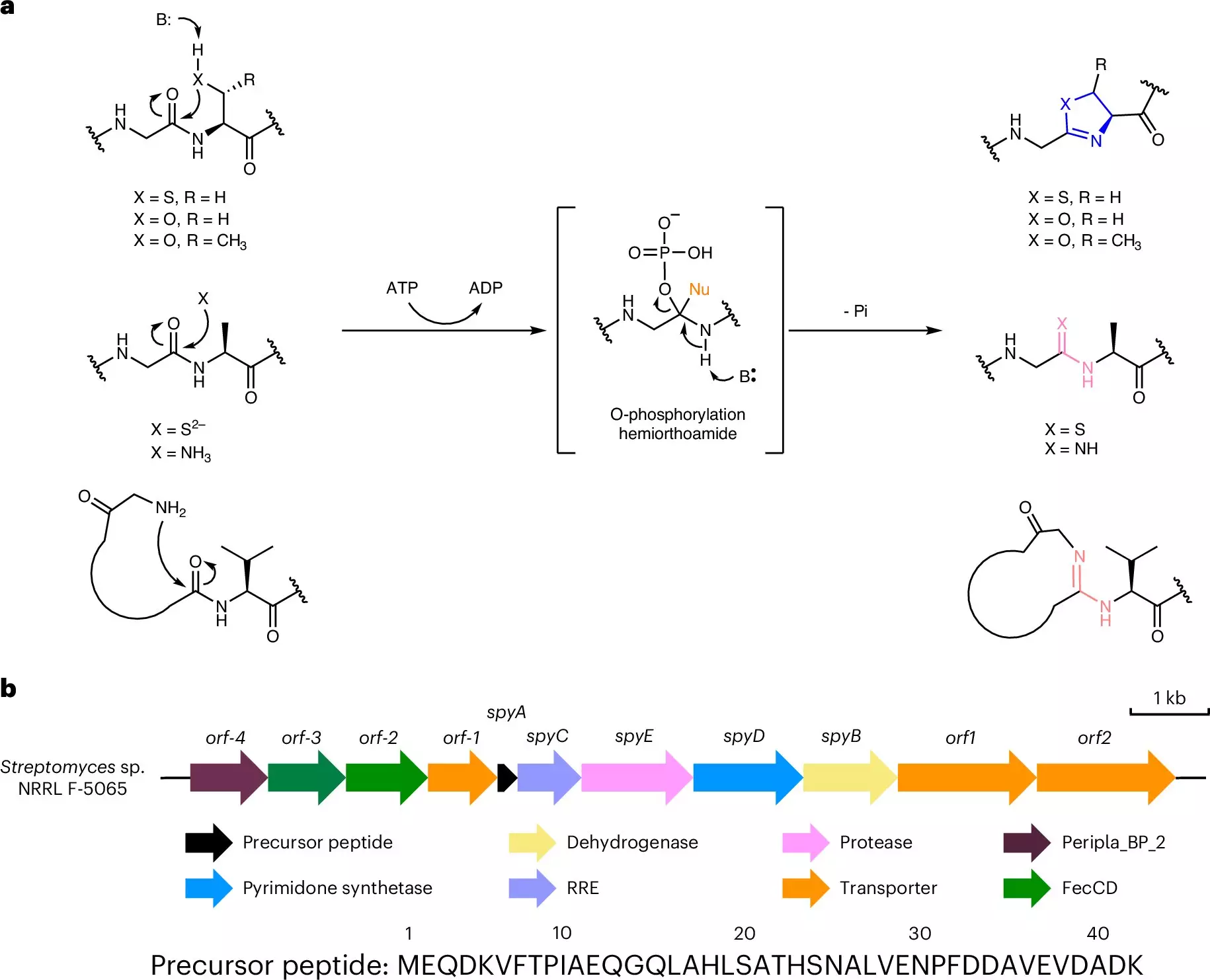The advancement in molecular biology has ignited a certain excitement in the scientific community, particularly with the emergence of biohybrid molecules—a fusion of DNA’s exquisite targeting ability and proteins’ functional versatility. Researchers have recently reported pioneering work that reveals how bacterial mechanisms can be harnessed to create large libraries of therapeutic DNA-protein hybrid molecules. This newfound approach could redefine the landscape of drug design, moving from tedious synthesis to efficient, nature-inspired methods.
Biohybrid molecules are garnered from two of nature’s most essential building blocks: nucleic acids, such as DNA and RNA, and amino acids, the fundamental components of proteins. Traditionally, chemists struggled to integrate these distinct biological entities into cohesive structures, as they typically perform independent yet vital roles in cellular processes. A breakthrough occurs when chemists can construct complex proteins adorned with customized nucleic acids that direct these proteins to specific DNA or RNA targets. Such innovations promise to enhance the precision of drugs, targeting mutated genes that foster disease or silencing pathogenic noncoding RNAs responsible for dysfunctions within cellular mechanisms.
This groundbreaking endeavor is not merely built on theoretical possibilities; it stems from rigorous experimentation and compelling findings. The research led by Satish Nair from the University of Illinois Urbana-Champaign, in collaboration with scientists from the John Innes Centre, unearthed a naturally occurring DNA-protein hybrid. Historically viewed as separate entities, these molecules may now merge, providing a sustainable methodology to produce precision therapeutics.
The origins of this research highlight an unforeseen yet fortuitous incident, which underscores a critical facet of scientific advancement: collaboration. Nair’s team was originally engaged in the quest for proteins that bind with metals when they stumbled upon a report from a British research team that showcased a unique molecule appearing to combine features of DNA and proteins. This sparked an outreach that led to a collaborative investigation confirming the unique nature of the molecule. Such partnership exemplifies how unexpected findings can foster innovative solutions through interdisciplinary teamwork, helping to unravel complex biological phenomena.
Nair’s journey is reminiscent of many scientific breakthroughs that hinge on recognizing opportunities lurking in accidental discoveries. The validation of the hybrid structure laid the groundwork for a detailed exploration, elucidating the molecular mechanics underpinning this synthesis in bacteria. This shared effort emphasizes that the evolution of scientific knowledge is often a cooperative enterprise, resulting in progress that might otherwise remain uncharted.
The capacity to produce biohybrid molecules efficiently cannot be overstated. Historically, the development of hybrid molecules involved labor-intensive, chemical synthesis that lacked scalability. The impossibility of generating vast libraries of compounds in a reasonable timeframe posed a significant barrier in therapeutic discovery.
The Illinois research team’s findings revealed that two bacterial enzymes work in synergy to transmute specific peptides into DNA-protein hybrids. The first enzyme, YcaO, modifies peptides into a ring-like structure, akin to nucleobase pairings. Once modified, a protease enzyme discards part of the molecule, yielding a fully functional biohybrid. This three-ingredient synergy abolished the need for running hundreds of thousands of chemical synthesis reactions, drastically reducing the time and resources required for compound generation.
Moreover, by leveraging the prolific E. coli bacterium for this synthetic route, researchers can harness the inherent biological machinery to produce hybrids efficiently. Such breakthroughs underscore the merits of biotechnological innovation, utilizing nature’s own processes to propel the field of drug development forward.
This progression towards biohybrid creation is not merely an academic triumph; it heralds a new era in therapeutic product development. Researchers can now envision a future where precision medicine becomes more accessible, granting unprecedented capabilities to disrupt disease mechanisms by precisely targeting genomic locations. With the ability to synthesize vast libraries of these molecules, the potential for discovering innovative treatments is immense.
Nair aptly remarked on the burgeoning possibilities this research has unlocked, motivating the laboratory community to expedite the pace of therapeutic discovery. As scientists continue to refine these methodologies, the hope is to witness this transformative process materialize into valuable treatments that address some of the most daunting health challenges of our time.
The integration of DNA’s homing prowess with the broad functionality of proteins showcases a remarkable leap in molecular science. By rediscovering and harnessing biological processes through collaborative efforts, researchers are set to revolutionize the development of targeted therapies, embodying the promise of modern medicine inspired by the wisdom of nature.

